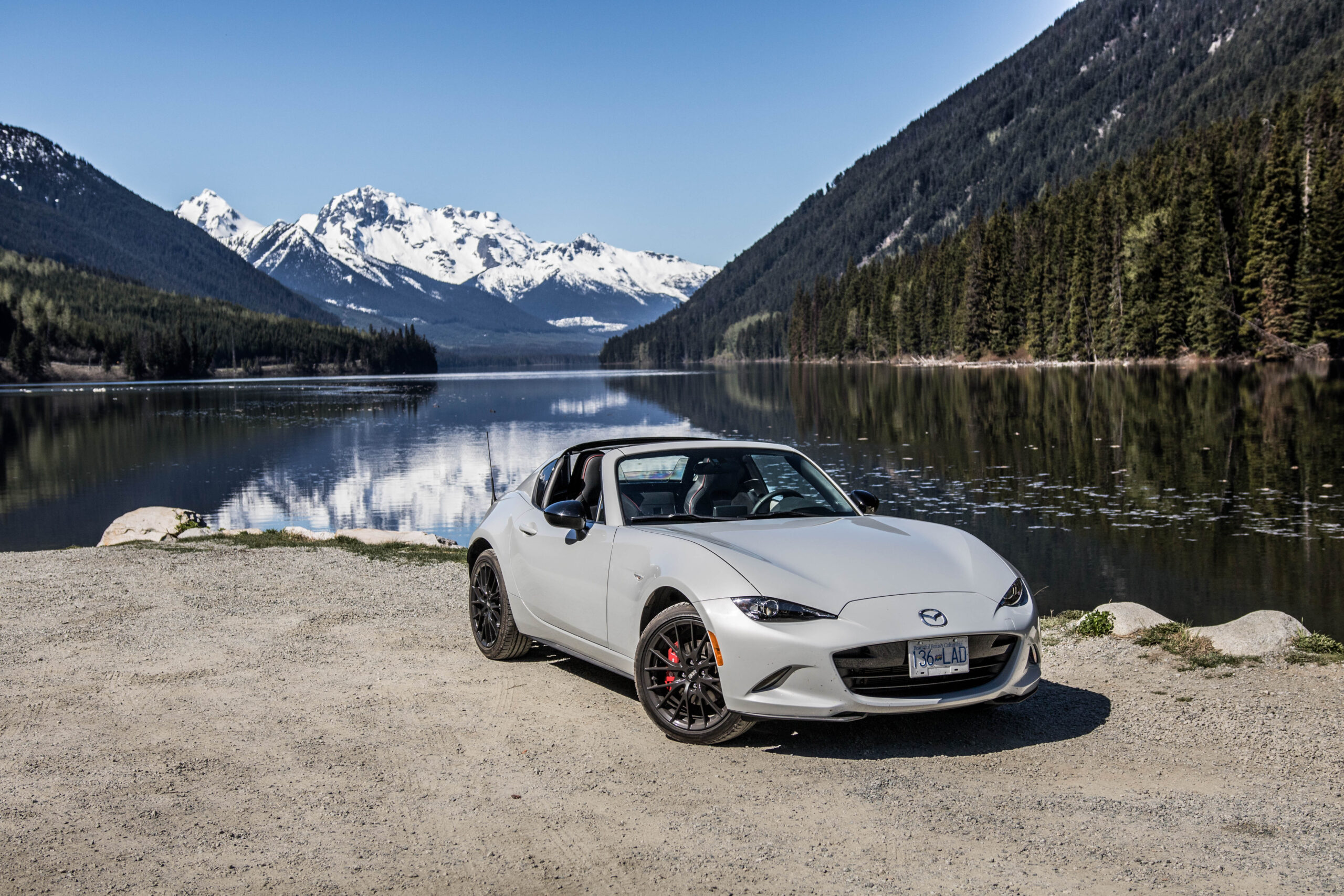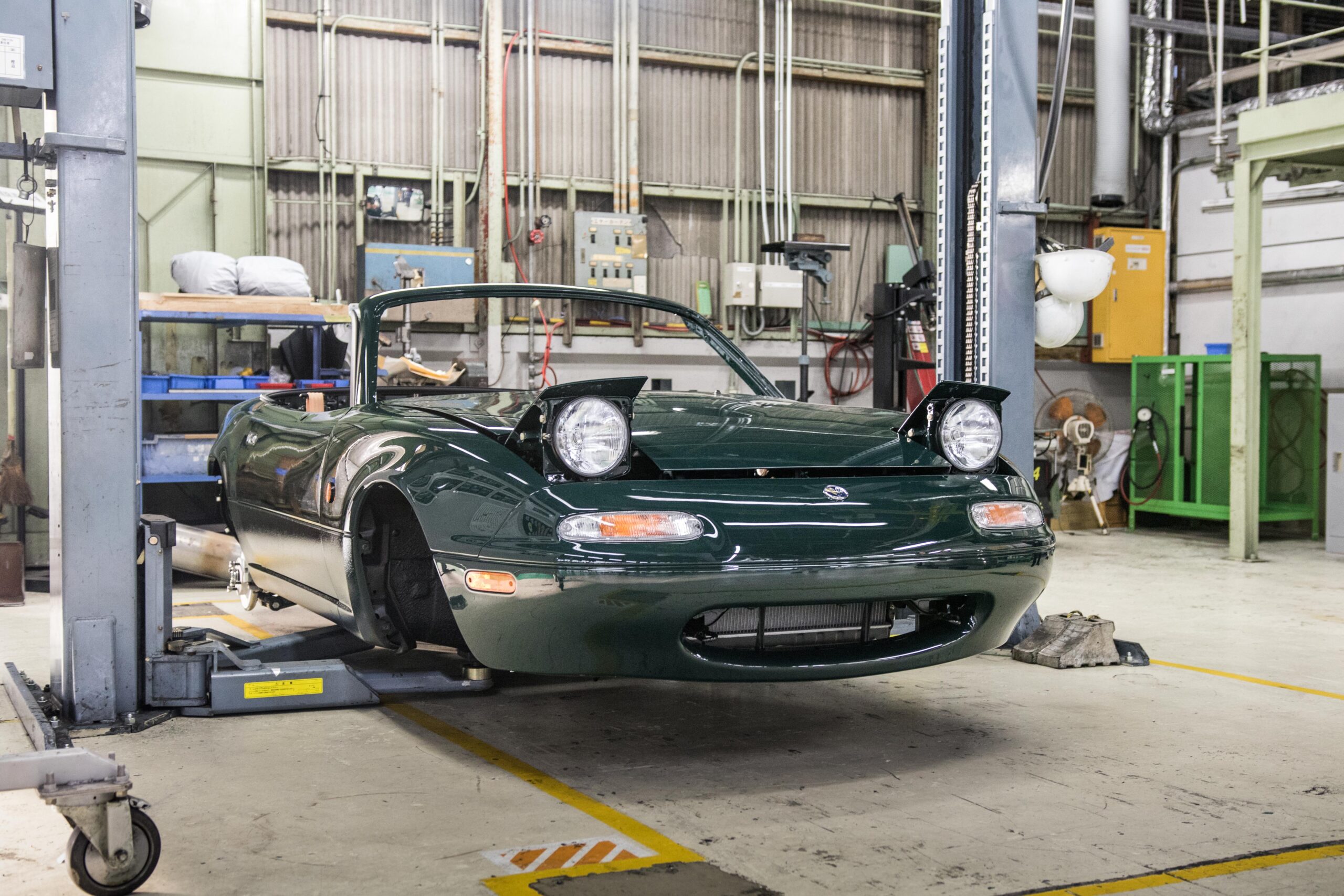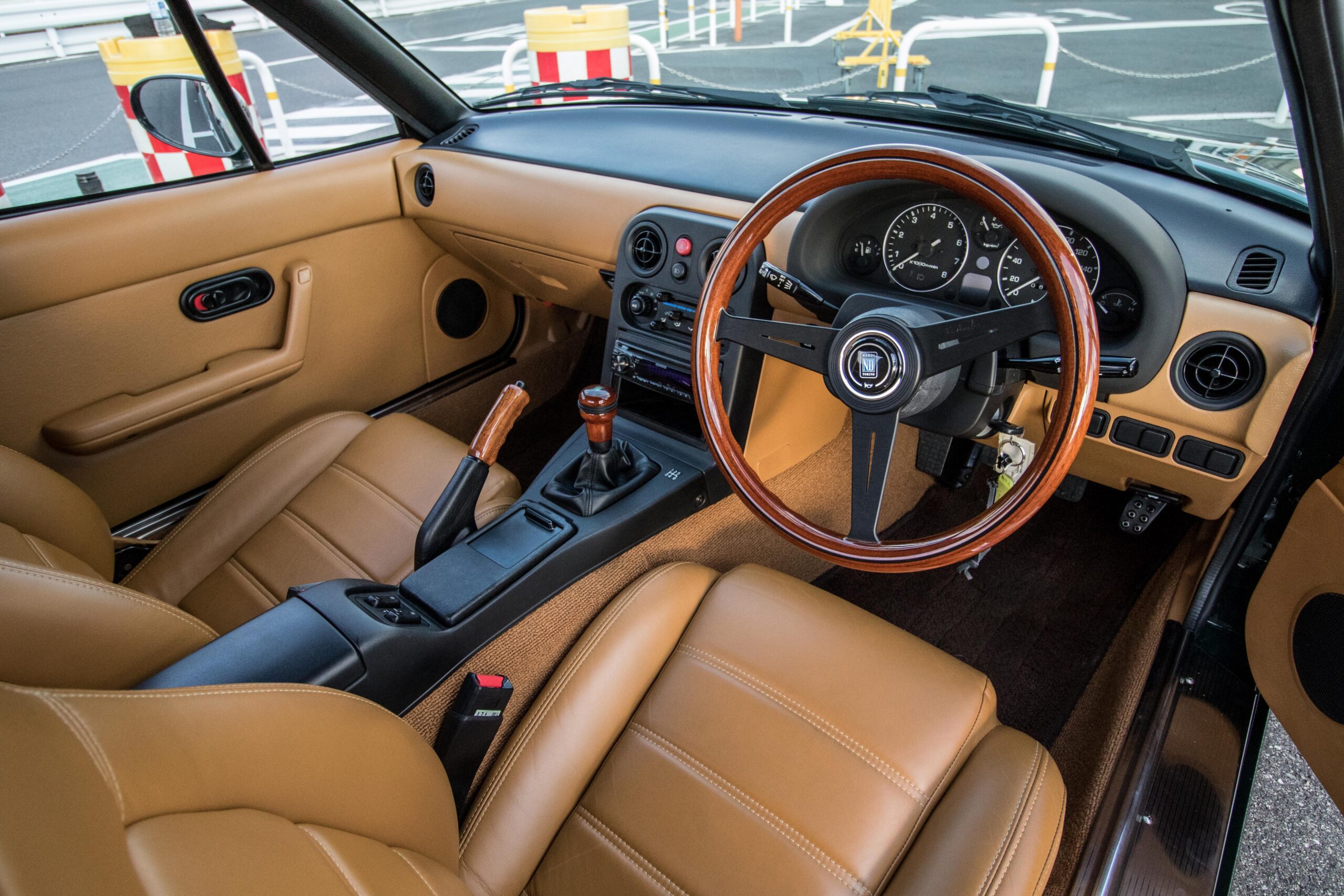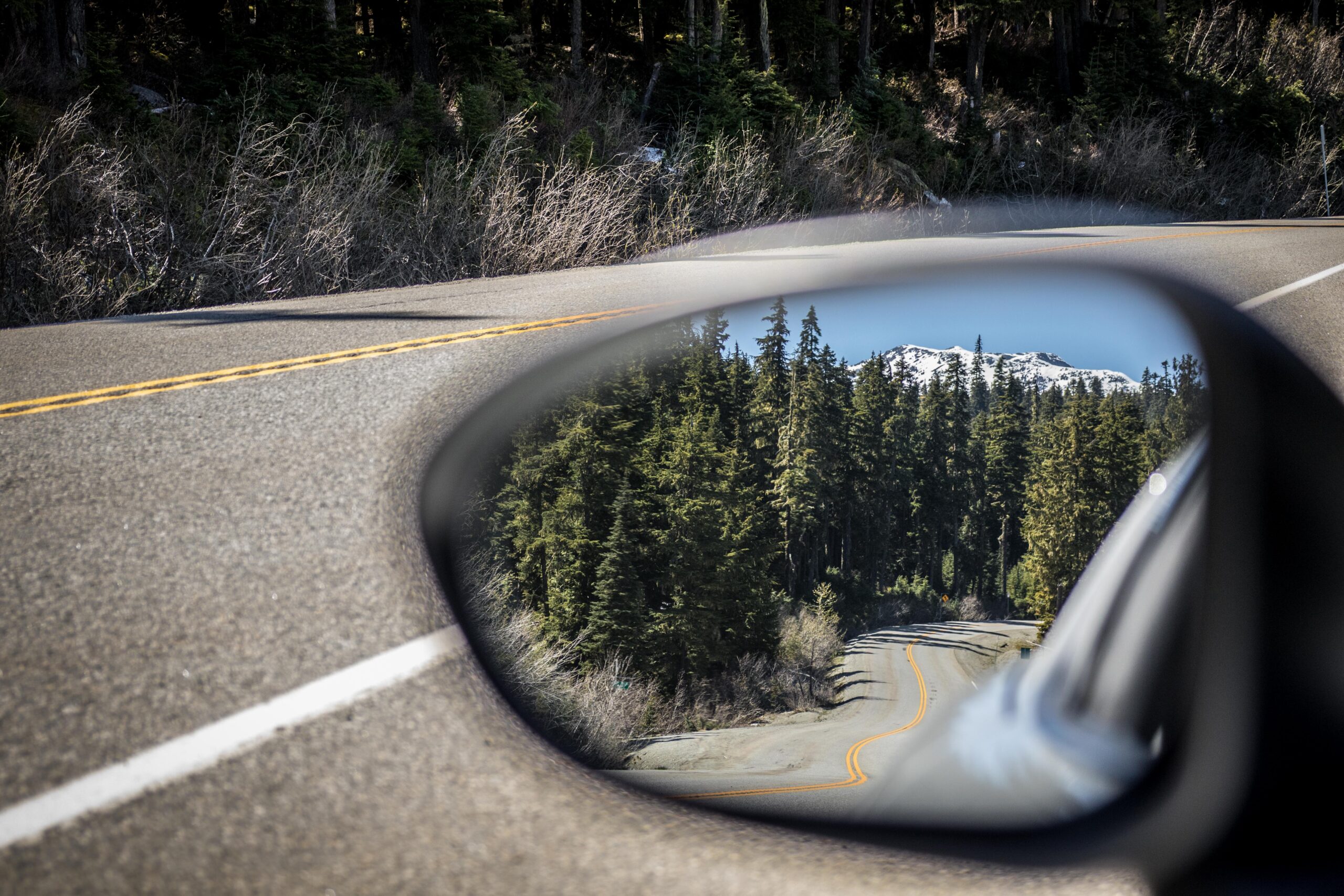On a canyon road in the mountains west of Hiroshima, on tarmac flowing alongside a coursing stream. Soaring above Big Sur over the concrete arched Bixby Bridge, bound for Monterey. Parked at the Duffey Lake boat ramp north of Pemberton, a cooling engine giving off little metallic plinking while you lift a morning cup of coffee to your lips. These are the natural habitats of the Mazda MX-5—better known as the Miata—after 35 years.
Taking its inspiration from classic British sports cars, the iconic roadster has outlasted them all. Over four generations, the Miata has survived the collapse of the Japanese economic bubble, the dot-com boom and bust, and the overwhelming market domination first by SUVs and then crossovers.
The Miata has steered clear of the current horsepower wars and all that boasting about acceleration times, it doesn’t come with big touchscreens or clever automated driving assists, and it arguably doesn’t even have a proper cupholder.
Instead, this tiny two-seater offers a recipe that hasn’t changed much in more than three decades. A fizzy four-cylinder engine up front. Gearbox, preferably manual, in the middle. Drive wheels out back. An unfussy soft-top that folds faster than you can put away a golf umbrella. And a chassis tuned not to iron out road imperfections but to embrace them, lean a little into driver inputs, teach you if you’re willing to listen.
It’s not a volume seller, doing a steady 1,000-plus units a year. It’s perhaps the most affordable halo car a brand ever made. But every one of those new Miatas that makes its way across the Pacific from Mazda’s home factories in Hiroshima brings a little bit of joy to the road.

The story of the original Miata contains several threads. The idea for the car had been percolating for years, first excitedly proposed to a Mazda executive by then-journalist Bob Hall in the mid-1970s.
By the early 1980s, Hall was working for Mazda in product planning, and that same executive, Kenichi Yamamoto, was now the company’s president. Trained as a mechanical engineer, Yamamoto started out as a humble assembly line worker. He led Mazda through difficult financial times and shepherded the unusual rotary engine from a mechanical oddity to a Le Mans race-winning technology.
Hall waxed rhapsodic on the joy of little British cars on backroads, but an engineer like Yamamoto required proof of concept. Thus, a local Hiroshima Triumph enthusiast was convinced to lend his Spitfire to Mazda’s president for a business trip that required travel to Tokyo. One of Japan’s modern shinkansen high-speed trains will do this run in six hours, but it’s a long haul by car. Still, the Spitfire charmed, and Yamamoto was convinced.
Three concepts were developed: two from Mazda’s Japanese design team and one from its California studio. The first two were a conventional front-wheel-drive cabriolet, and Mazda’s version of a mid-engined Toyota MR2. The California car was a classic front-engined, rear-wheel-drive roadster.
We all know which design won. Mazda hired a U.K. firm to develop a running prototype and went so far as to benchmark some of the best of British light sports cars. The engineering team road tested everything from MGs to Morgans, isolating the best elements of each.

Long before smartphone cameras and viral social media, the prototype was shipped to California for evaluation. There, Hall and Mazda engineers drove the car around SoCal canyons and coastal roads, periodically asking bystanders what they thought of it.
The first-generation MX-5 was dubbed the Miata, a name that stuck and which Mazda claimed was inspired by an old German word for reward, or gift. The car’s styling was closest to the much pricier Lotus Elan, right down to the look of the engine valve cover, but the similarities between the two did not run much deeper.
The first, NA-chassis, Miata was as durable and simple as if it had been a product from Fisher-Price. It looked like an Elan but was priced more like an MGB, an accessible roadster for everyone. And unlike those two British roadsters, the Miata was reliable. Put in just a bit of gasoline and receive mile-wide smiles for your effort.
Power came from a 1.6-litre four-cylinder with dual overhead camshafts and four valves per cylinder. The early models had just 116 horsepower, while a later bump in displacement to 1.8 litres got closer to 130 horsepower. Little of the experience was about raw acceleration—it was more about dancing through the corners and feeling the wind in your hair.
Mazda had a smash hit on its hands, one that later generations of MX-5 could never quite match. Once pampered examples made it into the used-car market, a few thousand dollars meant that one of the most joyous automotive experiences was within reach of practically anyone.
As lovable as a puppy, the original Miata had pop-up headlights that gave it a friendly face, and it was available in bright, cheerful colours. However, when fiddled with a little, it was also a surprisingly ferocious track toy. Being lightweight, it didn’t chew through brakes and tires as something like a V8 Mustang would, and the fact that it was small and responsive made it the ideal teaching tool for new racers.
To date, the MX-5 is the most-raced vehicle in the world, with multiple viciously contested spec racing series. The first of these began in the late 1990s, with the addition of some basic safety equipment and largely factory-spec power.
Many racers of far more powerful machinery first learned their trade in an MX-5. Racing schools like Skip Barber in California used them as the ideal teaching tool for novice drivers, and the various spec racing series were often the first rung to be climbed on the ladder of motorsport success.
The 35th-anniversary edition of the MX-5 builds on the top-level GT trim with signature deep red paint over a tan leather interior and folding top. It’s limited to just 230 cars for the Canadian market.
The fourth-generation car is more serious than the puppylike playfulness of its ancestors, but it holds true to those values. Power from the 2.0-litre inline four-cylinder engine is now up to 181 horsepower, and there are technological niceties such as wireless smartphone integration, but the new Miata still offers an analog driving experience.
One-handed, it’s possible to stow or deploy the top in mere seconds. Cruising through city streets in the early morning—catching whiffs from bakeries and coffee roasters—is as much an MX-5 delight as zipping down an undulating backroad with the revs up.

Even with the rise of electrification in mainstream vehicles, Mazda vows to stay the course. When asked what defines the car, current Mazda chief technology officer Ryuichi Umeshita responded, “I would say the most important thing is that it is lightweight. And that the second most important thing is that it is lightweight.” Some kind of mild hybridization is probably in the Miata’s future, but if any car can save us from 2,000-kilogram (and rising) curb weights everywhere you look, it’ll be Mazda’s little roadster warrior.
The original Miata’s longevity has also been assured. Several years ago, Mazda initiated a painstaking process to produce new parts for the original car, as well as a factory restoration program. The latter is very slow moving, with just a couple of cars per year brought back to like-new condition, and at considerable expense to the owner. But the parts catalogue is extensive, and that ultimately means owners of the early cars will be able to keep them on the road.
Read more transportation stories.








